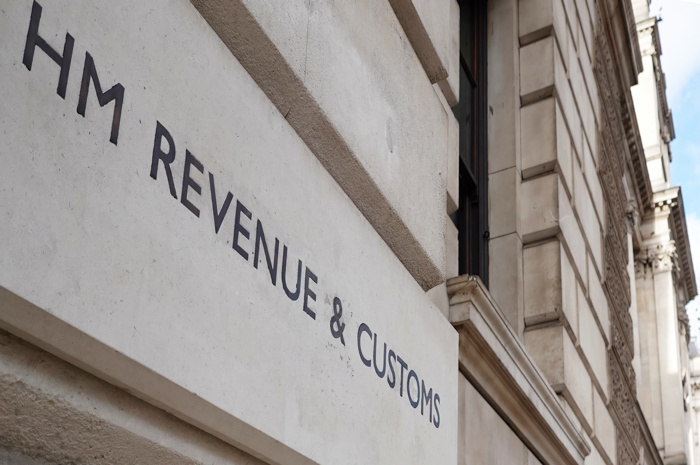What is meant by Holding Company?
A holding company, which may also be referred to as a Parent Company, is an incorporated limited company which handles the management of the assets and investments that it owns and controls. Any companies which are owned and controlled by the holding company are known as subsidiary companies.
To become a subsidiary company of a holding company then at least one of the following criteria extracted from the Companies Act 2006 must be complied with:
- The 'holding company' holds majority of the voting rights (greater than 50% of voting rights) in the subsidiary company
- The 'holding company' is a member of the 'subsidiary' and has the right to appoint or remove the majority of the 'subsidiaries' board of directors.
- The 'holding company' is a member of the 'subsidiary' and controls majority of the voting rights under an agreement with any other shareholders
How does a Holding Company work?
Typically a holding company itself does not sell products or provide services. Instead, the holding company would buy a majority share within another company, meaning that the holding company has now bought control of a new subsidiary company.
As a majority shareholder the holding company can influence the strategic decisions and the governance of subsidiary company. Thereby, the main function of a holding company is to manage its subsidiaries strategies in the most effective and efficient manner possible without impeding on the day-to-day operations of the subsidiary company.
Why are Holding Companies used?
Holding companies can be an incredibly powerful tool and when used to their full potential they provide the group with a range of taxation, legal, organisational and strategic benefits which can improve the operations of not just the holding company, but the subsidiaries it controls as well. The most common uses of a holding company are outlined below:
- To manage a diverse portfolio of businesses under one corporate entity
- Make clear the separation of the ownership and management of the businesses owned by the holding company
- To allow for the ownership and control of assets which are to be used by subsidiary companies
How does a Holding Company make an Income?
Earlier within this article we discussed that holding companies do not sell goods or services, therefore you might find yourself wondering how on earth they generate any money! Well, it may interest you to know that holding companies have several different ways to generate income of their own. Here are the most common methods:
Resource Provision
Holding companies may own many subsidiaries that operate in different sectors requiring specialised teams which are specific to goods and/or services that the subsidiary company provides, for example a salesforce for a service or a manufacturing team for a product.
However, there are certain teams which can be centralised across all of the subsidiaries owned by a holding company such as the Human Resources, Accountants and IT departments. The subsidiary company will then be charged a fee in order to access the services which are provided under the centralised resources belonging to the holding company, creating an income stream from department sharing.
Dividends Paid From Its Subsidiaries
Many holding companies will own one or multiple subsidiary companies which sell goods and/or services and if they are profitable their biggest shareholder, which is the holding company by default- can request dividend payments from the profit making subsidiary.
Buying and Selling of Assets
Holding companies are also able to produce significant financial returns from the buying and selling of assets such as equipment, intellectual property (patents and trademarks), machinery, real estate and in some cases the subsidiaries that it owns. Successful holding companies invest in assets that they believe they can grow themselves or will increase in value over time, then once they are happy with the return it is sold to generate a profit.
An example of this being done successfully would be a holding company that has purchased the control of a promising new company. The holding company then imposes its own controls as well as its tried and tested processes to grow the subsidiary company. Once the valuation suffices, the holding company can sell the subsidiary for a profit.
Leasing Owned Assets and Equipment
As discussed above, holding companies are used to purchase and control assets and equipment which can be sold to generate an income, but a holding company can also generate an income by charging the subsidiaries a fee (for example, a lease payment or licensing fee) which provides the subsidiary company with the right to use the asset and supplies the holding company with an income stream.
One example of this would be a holding company that controls a patent for a innovative manufacturing process which the subsidiary company needs for the production of new goods, therefore the subsidiary will pay a licensing fee to the holding company giving it the right to use the patented process.
Is a Holding Company the same as a Dormant Company?
The short answer is no! A dormant company in the UK is defined as a limited company which hasn't conducted any significant accounting transactions during its accounting period and has not been involved in any trading activities.
A holding company's most common purpose is to control the shares it owns or to hold assets without ever formally undertaking any business activities itself, therefore a holding company can be a dormant company if it does not actively trade. However, if a holding company does incur any significant transactions such as the sale of a subsidiary company, then in the eyes of HMRC the holding company would then be a trading company. Knowing whether a holding company is dormant would depend solely on the activities of the company within the accounting period.
Do I need to file taxes for a Holding Company?
A UK holding company, just like any other limited company is expected to pay Corporation Tax on any taxable profits that it has generated during its accounting period, although as a holding company it may be able to file for Group and Consortium relief which is accessed by completing the CT600C supplementary page.
In short, HMRC allows the movement of losses between companies within a group. Therefore, if one or more of the subsidiaries in the group are loss making then they are able to transfer the losses from a loss making company to a company within the group that is making a profit to reduce the corporation tax liability of the profit making company.
If a UK holding company has received dividends from a profit making subsidiary company then the dividends received are typically exempt from Corporation Tax and are treated under ABGH income within the Corporation Tax Return.
What to file for a Holding Company Each Year?
As a holding company is an incorporated company, similarly to any other limited company it will be required to submit the same filings each year to Companies House and HMRC. These are the returns a holding company will be required to make:
Corporation Tax Return (CT600) - Submitted every 12 months to HMRC
The purpose of the Corporation Tax Return, also known as the CT600, submission is for HMRC to be able to calculate the Corporation Tax Due to be paid to HMRC for the accounting period. When submitting the CT600 HMRC require the return to be accompanied by Full Accounts (both Balance Sheet and Profit & Loss) for the accounting period.
If you wish to file the CT600 for your holding company you can do so quickly and easily through our Corporation Tax Filing software.
PAYE Return (Full Payment Submission) - Submitted either monthly or quarterly (dependent on company size) to HMRC
If a holding company has any employees that are paid through payroll, then the company will be required to file a PAYE return to HMRC to report the PAYE information for its employees. This is used to calculate the Employers National Insurance due for the company to HMRC, on the salaries paid to the employees during the accounting period, as well as documenting the income tax, pension contributions and national insurance contributions of every employee for each tax year.
Annual Accounts - Submitted every 12 months to Companies House
The Companies House Register is where all UK limited companies, from large to micro are required to file their annual accounts to meet their legal obligation as required by the Companies Act 2006, regardless of whether the company traded or if it was dormant. These accounts are then available for the public to view on the Company Search feature on the Companies House Website to provide transparency to all users of the company's financial performance.
As a holding company is likely to own multiple subsidiaries, it may be required to provide Group accounts as well as individual accounts for each of the companies that it owns.
Companies which are classed as Micro to Small currently have the choice to file Abridged accounts, this means that they are only expected to disclose the company's balance sheet but are not required to disclose the Profit & Loss. Although it is crucial to note that this may be changing soon due to the disclosures made in the Economic Crime Bill discussed in greater depth within the linked article.
Confirmation Statement - Submitted every 12 months to Companies House
Companies House also require the submission of a Confirmation Statement to ensure that the basic information that is stored on Companies House's register such as the registered office address, current officers, share capital, and Standard Industrial Classification (SIC) code are accurate and up to date, and this is due to be submitted at least once every 12 months to Companies House.























